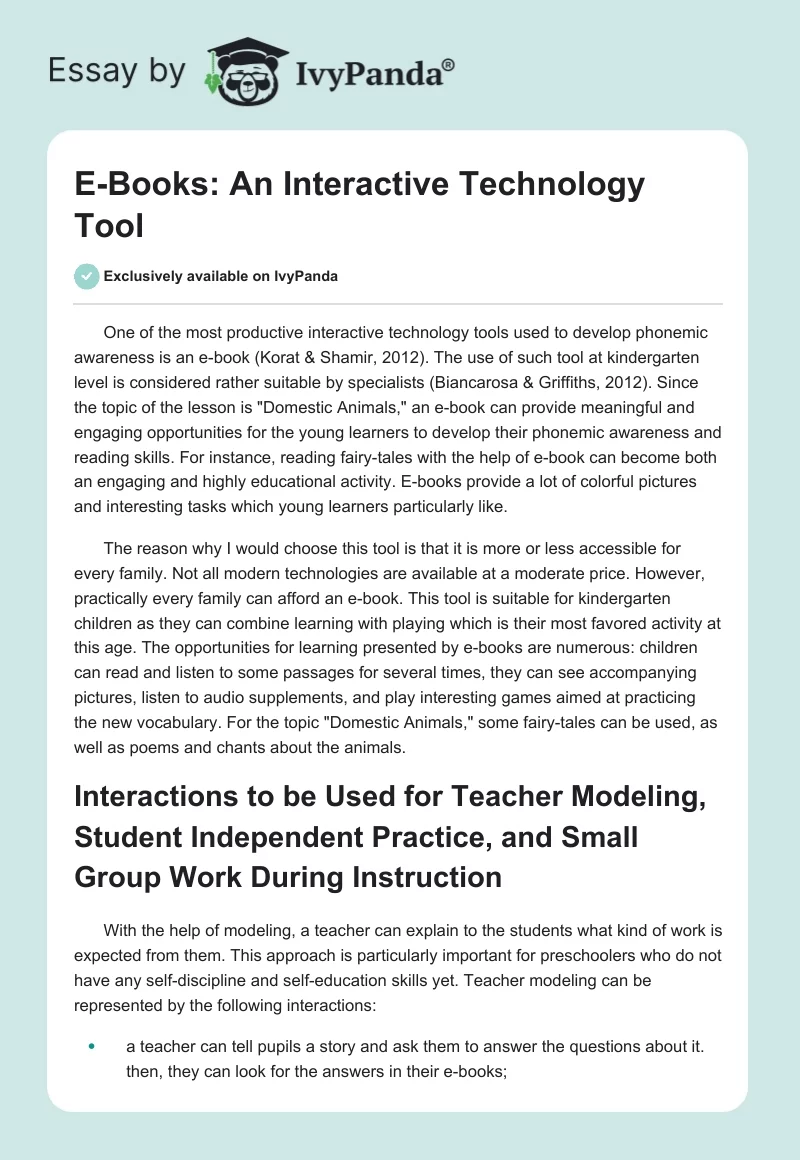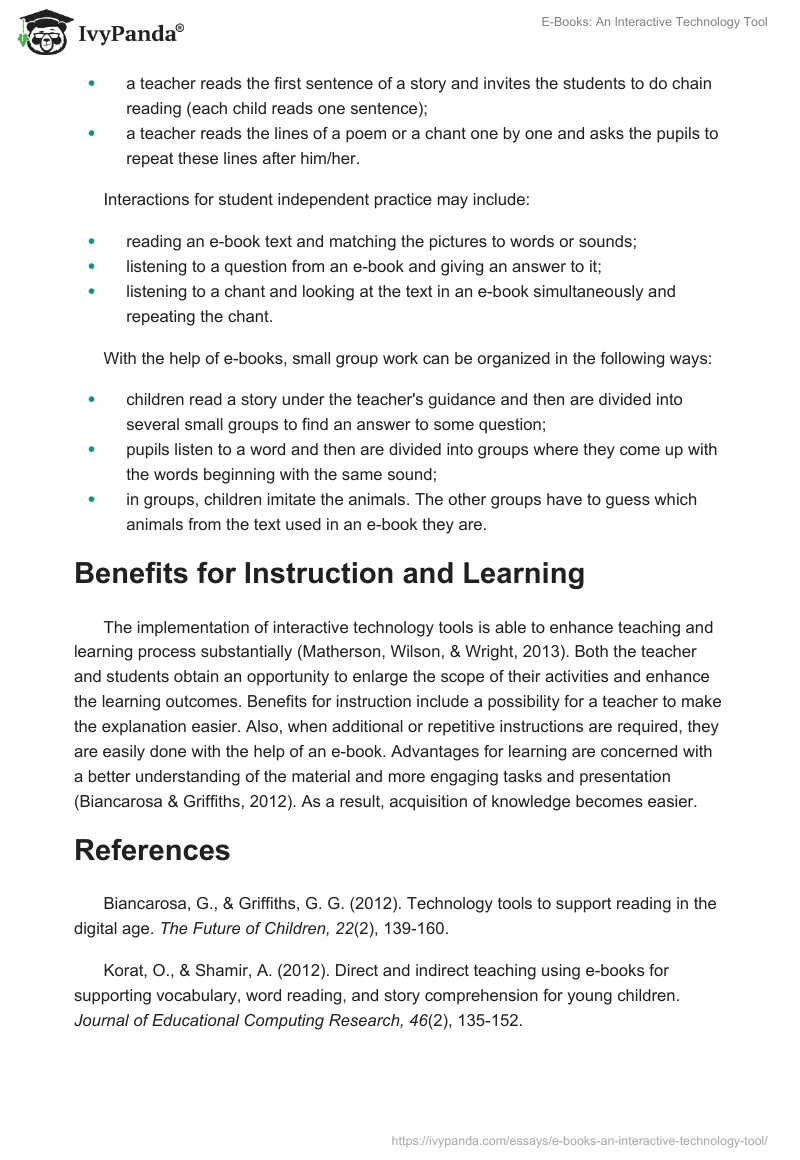One of the most productive interactive technology tools used to develop phonemic awareness is an e-book (Korat & Shamir, 2012). The use of such tool at kindergarten level is considered rather suitable by specialists (Biancarosa & Griffiths, 2012). Since the topic of the lesson is “Domestic Animals,” an e-book can provide meaningful and engaging opportunities for the young learners to develop their phonemic awareness and reading skills. For instance, reading fairy-tales with the help of e-book can become both an engaging and highly educational activity. E-books provide a lot of colorful pictures and interesting tasks which young learners particularly like.
The reason why I would choose this tool is that it is more or less accessible for every family. Not all modern technologies are available at a moderate price. However, practically every family can afford an e-book. This tool is suitable for kindergarten children as they can combine learning with playing which is their most favored activity at this age. The opportunities for learning presented by e-books are numerous: children can read and listen to some passages for several times, they can see accompanying pictures, listen to audio supplements, and play interesting games aimed at practicing the new vocabulary. For the topic “Domestic Animals,” some fairy-tales can be used, as well as poems and chants about the animals.
Interactions to be Used for Teacher Modeling, Student Independent Practice, and Small Group Work During Instruction
With the help of modeling, a teacher can explain to the students what kind of work is expected from them. This approach is particularly important for preschoolers who do not have any self-discipline and self-education skills yet. Teacher modeling can be represented by the following interactions:
- a teacher can tell pupils a story and ask them to answer the questions about it. then, they can look for the answers in their e-books;
- a teacher reads the first sentence of a story and invites the students to do chain reading (each child reads one sentence);
- a teacher reads the lines of a poem or a chant one by one and asks the pupils to repeat these lines after him/her.
Interactions for student independent practice may include:
- reading an e-book text and matching the pictures to words or sounds;
- listening to a question from an e-book and giving an answer to it;
- listening to a chant and looking at the text in an e-book simultaneously and repeating the chant.
With the help of e-books, small group work can be organized in the following ways:
- children read a story under the teacher’s guidance and then are divided into several small groups to find an answer to some question;
- pupils listen to a word and then are divided into groups where they come up with the words beginning with the same sound;
- in groups, children imitate the animals. The other groups have to guess which animals from the text used in an e-book they are.
Benefits for Instruction and Learning
The implementation of interactive technology tools is able to enhance teaching and learning process substantially (Matherson, Wilson, & Wright, 2013). Both the teacher and students obtain an opportunity to enlarge the scope of their activities and enhance the learning outcomes. Benefits for instruction include a possibility for a teacher to make the explanation easier. Also, when additional or repetitive instructions are required, they are easily done with the help of an e-book. Advantages for learning are concerned with a better understanding of the material and more engaging tasks and presentation (Biancarosa & Griffiths, 2012). As a result, acquisition of knowledge becomes easier.
References
Biancarosa, G., & Griffiths, G. G. (2012). Technology tools to support reading in the digital age. The Future of Children, 22(2), 139-160.
Korat, O., & Shamir, A. (2012). Direct and indirect teaching using e-books for supporting vocabulary, word reading, and story comprehension for young children. Journal of Educational Computing Research, 46(2), 135-152.
Matherson, L., Wilson, E. K., & Wright, V. H. (2013). Gateway tools: Five tools to allow teachers to overcome barriers to technology integration. The Delta Kappa Gamma Bulletin: International Journal for Professional Educators, 80(1), 36-40.


